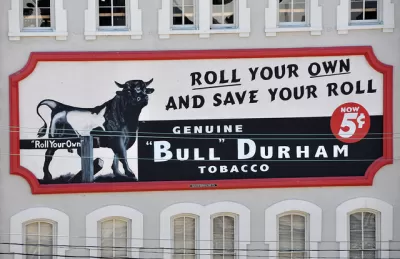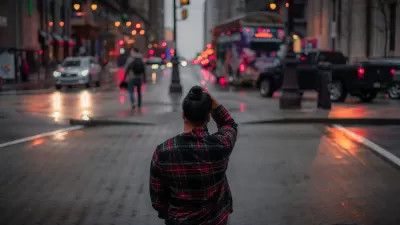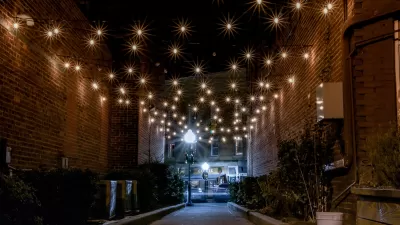The city of Durham hosted a public workshop this week to discuss urban design plans for converting a circuitous couplet to a two-way street grid.

As the former tobacco manufacturing town continues to reinvent itself, the city and private developers are partnering to reconfigure infrastructure based on principles of contemporary urbanism. One idea, presented by local developer Cleveland and Church Partners, is to convert Roxboro, Mangum, Morgan, and Ramseur streets to two-way operations, with on-street parking, new connections, and pedestrian and bicycle amenities. The current street network—known as the downtown loop—consists of one-way traffic up to four lanes wide.
While moving cars quickly, it is a difficult and confusing network in a downtown that is otherwise logically laid out.

“Fifty years ago, downtowns tried to mimic the convenience of suburban shopping centers, says David Godschalk, professor emeritus at the University of North Carolina's Department of City and Regional Planning, says, "because downtowns were losing people to the malls."
New residents moving to the urban core desire walkability and streetscapes that support compact urban form, which is not supported by the current loop’s broad, bypass-style configuration. Transformative infrastructure projects like the downtown loop conversion help make downtown more attractive and convenient, which ripens the private sector market, and allows for further enhancement as new development projects come online.
This revised concept is based on public input received at the first workshop in October 2009. While the plans were created by a private entity, the city has placed them on its web site, and includes the downtown loop among a list of high-profile, infrastructure projects to consider over the long term.
FULL STORY: Ditching Durham's Downtown Loop

Study: Maui’s Plan to Convert Vacation Rentals to Long-Term Housing Could Cause Nearly $1 Billion Economic Loss
The plan would reduce visitor accommodation by 25,% resulting in 1,900 jobs lost.

North Texas Transit Leaders Tout Benefits of TOD for Growing Region
At a summit focused on transit-oriented development, policymakers discussed how North Texas’ expanded light rail system can serve as a tool for economic growth.

Using Old Oil and Gas Wells for Green Energy Storage
Penn State researchers have found that repurposing abandoned oil and gas wells for geothermal-assisted compressed-air energy storage can boost efficiency, reduce environmental risks, and support clean energy and job transitions.

Private Donations Propel Early Restoration of Palisades Playground
Los Angeles has secured over $1.3 million in private funding to restore the Pacific Palisades playground months ahead of schedule, creating a modern, accessible space that supports community healing after recent wildfires.

From Blight to Benefit: Early Results From California’s Equitable Cleanup Program
The Equitable Community Revitalization Grant (ECRG) program is reshaping brownfield redevelopment by prioritizing projects in low-income and environmental justice communities, emphasizing equity, transparency, and community benefits.

Planting Relief: Tackling Las Vegas Heat One Tree at a Time
Nevada Plants, a Las Vegas-based nonprofit, is combating the city’s extreme urban heat by giving away trees to residents in underserved neighborhoods, promoting shade, sustainability, and community health.
Urban Design for Planners 1: Software Tools
This six-course series explores essential urban design concepts using open source software and equips planners with the tools they need to participate fully in the urban design process.
Planning for Universal Design
Learn the tools for implementing Universal Design in planning regulations.
Ascent Environmental
Borough of Carlisle
Institute for Housing and Urban Development Studies (IHS)
City of Grandview
Harvard GSD Executive Education
Toledo-Lucas County Plan Commissions
Salt Lake City
NYU Wagner Graduate School of Public Service




























